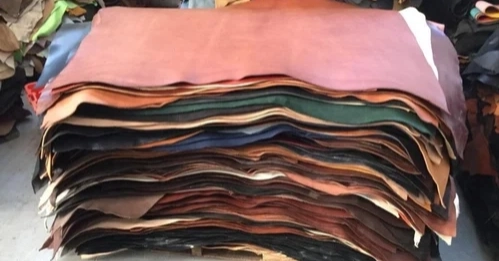Bangladesh’s leather industry, once considered a promising sector with vast growth potential, has faced persistent challenges in surpassing the $1 billion export mark, a threshold it has struggled to breach for over a decade. Industry leaders and economists have pointed to a combination of outdated infrastructure, insufficient investment, and a lack of international compliance as the primary factors holding back its growth.
Experts have described the industry as being “trapped in a billion-dollar cage,” with the sector’s full potential estimated at $5 billion by 2030. Key obstacles include poor coordination among stakeholders, outdated machinery, and non-compliance with international standards.
One of the major hurdles is the underdeveloped Savar Tannery Estate, which serves as a key hub for the leather sector. Despite years of promises, the estate remains incomplete, with its Central Effluent Treatment Plant (CETP) in poor condition and continuing to discharge untreated water into the environment. This environmental non-compliance has made it impossible for local tanneries to secure Leather Working Group (LWG) certification, a critical accreditation for accessing premium global markets.
Md Shaheen Ahamed, chairman of the Bangladesh Tanners Association (BTA), emphasized that while the government has prioritized the leather industry for its potential in growth, investment, and job creation, non-compliance with international environmental and social standards is a major barrier to its success. “We are working toward helping our members mitigate risks and move toward a sustainable future,” Ahamed said.
Dr M Masrur Reaz, chairman of Policy Exchange Bangladesh, highlighted the absence of LWG certification as a key roadblock. “This certification limits access to global markets, forcing Bangladesh to sell raw hides at 20–30% lower prices compared to competitors like India and Pakistan,” he stated. Bangladesh lags far behind, with no LWG-certified tanneries, while India boasts over 150, and Pakistan more than 80.
The lack of certification is compounded by the sector’s reliance on exporting semi-processed leather, primarily wet blue, which yields far lower prices than finished goods. In addition, local tanners struggle to secure loans from banks that require proof of LWG certification or environmental compliance.
A fragmented supply chain, outdated technology, and inefficient pricing systems further restrict the sector’s growth. Raw hide wastage during peak seasons, such as Eid-ul-Adha, is also a significant issue, with an estimated 15-20% of hides lost due to poor preservation and transport.
Abul Kalam Azad, president of the Tannery Workers’ Union, noted the longstanding issues within the industry, including the lack of basic labor rights for workers, such as employment letters and minimum wages. The lack of social compliance and ineffective CETP are pushing parts of the sector into informality, Azad added.
Experts have proposed several measures to unlock the leather industry’s potential, including the fast-tracking of Savar Tannery Estate’s completion and CETP upgrades, offering tax incentives or soft loans for LWG certification, and diversifying exports to focus on finished leather goods. Supporting small and medium-sized enterprises (SMEs) with design and branding assistance and implementing structural reforms to strengthen the industry are also key recommendations.
In order to achieve its estimated $5 billion target by 2030, the leather industry will need a coordinated effort to address these long-standing challenges and adhere to global standards of environmental and social compliance.


